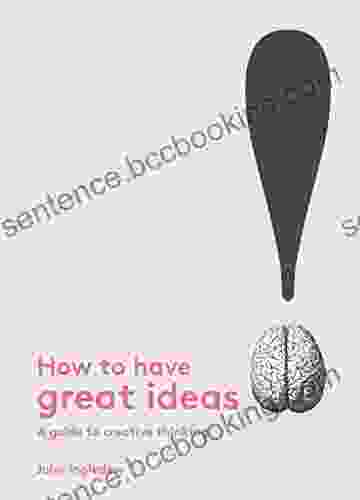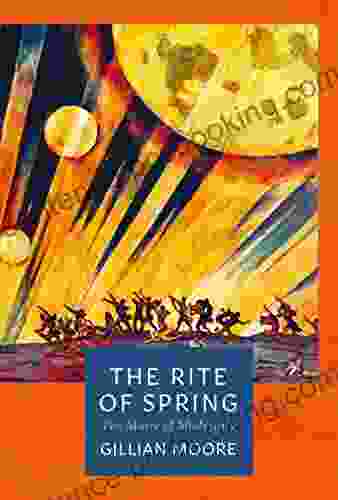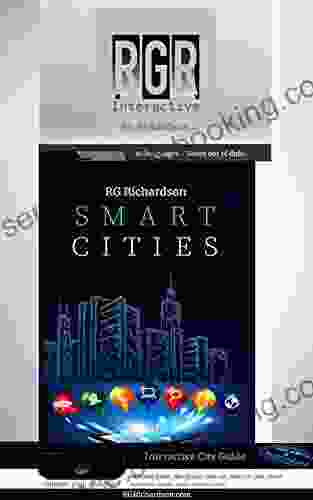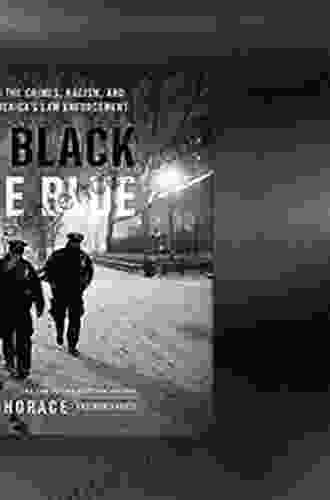How to Have Great Ideas: Unlock Your Creative Potential and Achieve Extraordinary Results

4.2 out of 5
| Language | : | English |
| File size | : | 50119 KB |
| Text-to-Speech | : | Enabled |
| Screen Reader | : | Supported |
| Enhanced typesetting | : | Enabled |
| Print length | : | 330 pages |
In today's rapidly changing world, the ability to generate great ideas is more important than ever. Whether you're a student, a business professional, or an artist, having great ideas can help you solve problems effectively, innovate solutions, and achieve extraordinary results. But how do you come up with great ideas? Is it a gift that only a few people have, or can anyone learn to be more creative?
The good news is that creativity is a skill that can be learned and developed. With the right tools and techniques, anyone can learn to generate more and better ideas. In this comprehensive guide, we'll explore the secrets to having great ideas and provide you with the tools you need to unlock your full creative potential.
Chapter 1: The Creative Mindset
The first step to having great ideas is to develop a creative mindset. This means being open to new experiences, curious about the world around you, and willing to take risks. Creative people are also often good at making connections between seemingly unrelated things. They see patterns and possibilities that others miss.
There are a number of things you can do to develop a more creative mindset. Here are a few tips:
- Be open to new experiences. Try new things, visit new places, and meet new people. The more experiences you have, the more likely you are to make new connections and come up with new ideas.
- Be curious about the world around you. Pay attention to the things that interest you and ask questions about them. The more you know about the world, the more likely you are to find new ways to solve problems and create new things.
- Be willing to take risks. Don't be afraid to try new things, even if you're not sure they will work. The only way to learn is by ng, and sometimes you have to take risks to come up with great ideas.
Chapter 2: The Idea Generation Process
Once you have developed a creative mindset, you can start to use the idea generation process to come up with great ideas. This process involves four steps:
- Preparation: This step involves gathering information about the problem you are trying to solve or the opportunity you are trying to create. The more you know about the subject, the more likely you are to come up with good ideas.
- Incubation: This step involves letting your mind wander and relax. During this time, your subconscious mind will work on the problem and come up with new ideas.
- Illumination: This is the moment when the great idea comes to you. It can happen anytime, anywhere. Be prepared to capture your ideas as soon as they come to you.
- Verification: This step involves testing your ideas to see if they are feasible and workable. Not all ideas are good ideas, so it's important to evaluate your ideas carefully before you invest time and resources in them.
Chapter 3: The Creative Techniques
There are a number of creative techniques that you can use to help you generate great ideas. Here are a few of the most popular techniques:
- Brainstorming: This is a classic idea generation technique that involves getting a group of people together to share their ideas. Brainstorming can be a great way to come up with a lot of ideas quickly.
- Mind mapping: This technique involves creating a visual representation of your ideas. Mind maps can help you to see the connections between different ideas and come up with new solutions.
- Freewriting: This technique involves writing down everything that comes to mind without stopping. Freewriting can help you to clear your mind and come up with new ideas.
Chapter 4: Putting Great Ideas into Action
Once you have generated a great idea, the next step is to put it into action. This involves developing a plan, taking action, and overcoming obstacles. Here are a few tips for putting great ideas into action:
- Develop a plan. Before you take any action, it's important to develop a plan for how you are going to achieve your goal. The plan should include specific steps that you can take, as well as a timeline for completing the project.
- Take action. Once you have a plan, it's time to take action. Don't be afraid to start small and build momentum over time. The most important thing is to take the first step.
- Overcome obstacles. There will be obstacles along the way, but it's important to keep going. Don't give up on your dreams, even when things get tough.
Having great ideas is a skill that can be learned and developed. With the right tools and techniques, anyone can learn to generate more and better ideas. This guide has provided you with the essential tools you need to unlock your full creative potential and achieve extraordinary results. So what are you waiting for? Start generating great ideas today!
4.2 out of 5
| Language | : | English |
| File size | : | 50119 KB |
| Text-to-Speech | : | Enabled |
| Screen Reader | : | Supported |
| Enhanced typesetting | : | Enabled |
| Print length | : | 330 pages |
Do you want to contribute by writing guest posts on this blog?
Please contact us and send us a resume of previous articles that you have written.
 Book
Book Novel
Novel Page
Page Chapter
Chapter Text
Text Story
Story Genre
Genre Reader
Reader Library
Library Paperback
Paperback E-book
E-book Magazine
Magazine Newspaper
Newspaper Paragraph
Paragraph Sentence
Sentence Bookmark
Bookmark Shelf
Shelf Glossary
Glossary Bibliography
Bibliography Foreword
Foreword Preface
Preface Synopsis
Synopsis Annotation
Annotation Footnote
Footnote Manuscript
Manuscript Scroll
Scroll Codex
Codex Tome
Tome Bestseller
Bestseller Classics
Classics Library card
Library card Narrative
Narrative Biography
Biography Autobiography
Autobiography Memoir
Memoir Reference
Reference Encyclopedia
Encyclopedia John Alton
John Alton Roasted Rat
Roasted Rat Rev Dr William J Barber Ii
Rev Dr William J Barber Ii Thomas Sparr
Thomas Sparr John Jamieson
John Jamieson John Archambault
John Archambault Seraphina Nova Glass
Seraphina Nova Glass Vrinda Sheth
Vrinda Sheth John Hughes
John Hughes Joanne Hayle
Joanne Hayle Rob Taylor
Rob Taylor Rick Antonson
Rick Antonson John Byrne
John Byrne John Campbell
John Campbell Lenora Ucko
Lenora Ucko Lisa Lewis
Lisa Lewis Joel Chasnoff
Joel Chasnoff Jonathan D Spence
Jonathan D Spence Jodi Dinnerman
Jodi Dinnerman Joanne Hutchinson
Joanne Hutchinson
Light bulbAdvertise smarter! Our strategic ad space ensures maximum exposure. Reserve your spot today!
 Seth HayesFollow ·12.3k
Seth HayesFollow ·12.3k T.S. EliotFollow ·15.5k
T.S. EliotFollow ·15.5k Bradley DixonFollow ·18.3k
Bradley DixonFollow ·18.3k Philip BellFollow ·11.1k
Philip BellFollow ·11.1k Maurice ParkerFollow ·14.8k
Maurice ParkerFollow ·14.8k Alec HayesFollow ·7.9k
Alec HayesFollow ·7.9k Ernest ClineFollow ·15.1k
Ernest ClineFollow ·15.1k Brian BellFollow ·18.9k
Brian BellFollow ·18.9k

 Jesus Mitchell
Jesus MitchellDiscover the World of Satisfying Meals with Or...
In a world where culinary creations often...

 Darius Cox
Darius CoxJourney into the Extraordinary Life of Kublai Khan: An...
Immerse Yourself in the Fascinating...

 Gil Turner
Gil TurnerThe Fourth Industrial Revolution: The Precariat and the...
In his groundbreaking book, The Fourth...
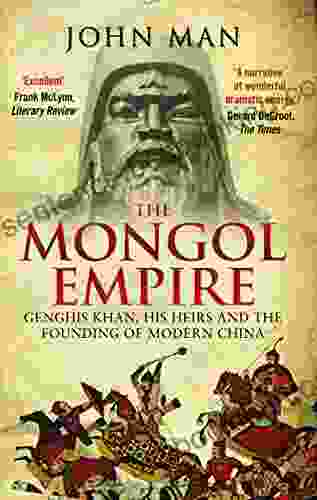
 Jonathan Franzen
Jonathan FranzenGenghis Khan: His Heirs and the Founding of Modern China
Genghis Khan, the...

 Eugene Powell
Eugene PowellJourney Through the Golden Age of the Ottoman Empire with...
Delve into the Enchanting World of the...
4.2 out of 5
| Language | : | English |
| File size | : | 50119 KB |
| Text-to-Speech | : | Enabled |
| Screen Reader | : | Supported |
| Enhanced typesetting | : | Enabled |
| Print length | : | 330 pages |


